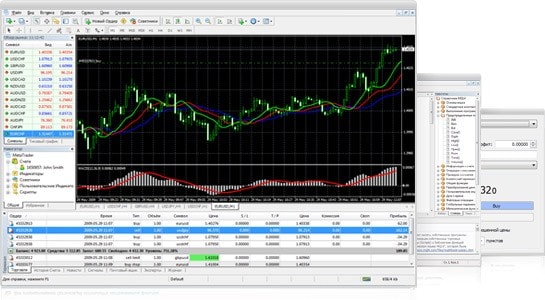Dollar Falls as Report Shows U.S. Jobs Growth Slowed
The dollar fell from a 14-month high after a report showed employers added the fewest jobs this year in August, damping speculation the Federal Reserve will raise interest rates sooner than anticipated.
The Bloomberg Dollar Spot Index pared a weekly gain after Labor Department data showed
 employment grew by 142,000 jobs, versus a Bloomberg survey forecast of 230,000. The yen gained from the weakest level in almost six years and the euro rose from almost a 14-month low. The currencies fell yesterday as the Bank of Japan maintained its unprecedented stimulus and the European Central Bank cut interest rates.
employment grew by 142,000 jobs, versus a Bloomberg survey forecast of 230,000. The yen gained from the weakest level in almost six years and the euro rose from almost a 14-month low. The currencies fell yesterday as the Bank of Japan maintained its unprecedented stimulus and the European Central Bank cut interest rates.
“The headline payrolls number wasn’t so strong, and I think you saw the dollar come off a bit on the back,” said Robert Lynch, a currency strategist at HSBC Holdings Plc in New York. For euro-dollar, “the ECB developments are still the more important factor.”
The Bloomberg Dollar Spot Index fell as much as 0.3 percent to 1,036.55 before trading at 1,038.18 at 5 p.m. in New York, down 0.1 percent. It advanced earlier to 1,041.58, the highest since July 2013. The gauge rose 0.9 percent this week.
The yen rose 0.2 percent to 105.09 per dollar after depreciating earlier to 105.71, the weakest since October 2008. The euro gained as much as 0.3 percent to $1.2988 before trading at $1.2951. It touched $1.2920 yesterday, the lowest level since July 2013.
Canada’s dollar weakened against most major counterparts after employment unexpectedly declined by 11,000 jobs in August. The currency slipped as much as 0.3 percent against the U.S. dollar to C$1.0903.
Sterling had the biggest weekly loss in more than a year before a vote on Scottish independence on Sept. 18. A win for nationalists seeking to leave the U.K. may prompt a pound selloff, Goldman Sachs Group Inc. said this week. The currency dropped 1.6 percent from Aug. 29 to $1.6327. It was little changed on the day.
The euro fell yesterday when the ECB unexpectedly cut its main refinancing rate to a record and introduced additional stimulus. ECB President Mario Draghi is trying to stave off deflation as the euro region’s economy slumps.
Draghi pledged to “significantly steer” the central bank’s balance sheet back toward the 2.7 trillion euros ($3.5 billion) of early 2012 from 2 trillion euros. He announced a plan to buy securitized debt and covered bonds.
The yen slid yesterday after the Bank of Japan kept its monetary stimulus unchanged. Japanese policy makers maintained their pledge to increase the monetary base at an annual pace of 60 trillion yen ($570 billion) to 70 trillion yen
Japan’s currency fell 1 percent in the past month in a basket of 10 developed-nation currencies tracked by Bloomberg Correlation-Weighted Indexes. The euro dropped 1.9 percent, the worst performer after the pound, while the dollar strengthened 1.7 percent.
The unemployment rate fell to 6.1 percent from 6.2 percent in July, reflecting a drop in joblessness among teenagers.
Fed policy makers led by Chair Janet Yellen raised the possibility at a meeting in July that they might increase the benchmark interest-rate target sooner than they anticipated if labor-market gains quicken, according to minutes released on Aug. 20. The U.S. central bank meets Sept. 16-17.
The employment report “will probably come up for conversation at the next Fed meeting, but I can’t see this changing Yellen’s view in any way,” Douglas Borthwick, the head of foreign exchange at New York brokerage Chapdelaine & Co., said by phone. “The Fed continues to have this thought that they’ll be raising rates sooner than other countries.”
Futures trading showed a 52 percent likelihood of an increase to at least 0.5 percent by July 2015, versus a 56 percent chance yesterday.
“Things continue to be worse abroad -- in the euro zone, in Japan, in China, in much of the industrialized world,” Omer Esiner, chief market analyst at currency brokerage Commonwealth Foreign Exchange Inc. in Washington, said in a phone interview. “The U.S. appears to be the strongest of that group, and as such I think the dollar should continue longer-term to appreciate.”
To contact the reporter on this story: Rachel Evans in New York at revans43@bloomberg.net
To contact the editors responsible for this story: Dave Liedtka at dliedtka@bloomberg.net Greg Storey
 employment grew by 142,000 jobs, versus a Bloomberg survey forecast of 230,000. The yen gained from the weakest level in almost six years and the euro rose from almost a 14-month low. The currencies fell yesterday as the Bank of Japan maintained its unprecedented stimulus and the European Central Bank cut interest rates.
employment grew by 142,000 jobs, versus a Bloomberg survey forecast of 230,000. The yen gained from the weakest level in almost six years and the euro rose from almost a 14-month low. The currencies fell yesterday as the Bank of Japan maintained its unprecedented stimulus and the European Central Bank cut interest rates.“The headline payrolls number wasn’t so strong, and I think you saw the dollar come off a bit on the back,” said Robert Lynch, a currency strategist at HSBC Holdings Plc in New York. For euro-dollar, “the ECB developments are still the more important factor.”
The Bloomberg Dollar Spot Index fell as much as 0.3 percent to 1,036.55 before trading at 1,038.18 at 5 p.m. in New York, down 0.1 percent. It advanced earlier to 1,041.58, the highest since July 2013. The gauge rose 0.9 percent this week.
The yen rose 0.2 percent to 105.09 per dollar after depreciating earlier to 105.71, the weakest since October 2008. The euro gained as much as 0.3 percent to $1.2988 before trading at $1.2951. It touched $1.2920 yesterday, the lowest level since July 2013.
Peso, Pound
The Chilean peso climbed the most among the U.S. dollar’s 31 major peers after data showed the nation’s economy grew more than forecast in July and wages rose at the fastest pace since 2009. The currency gained 1.2 percent to 586.40 per dollar.Canada’s dollar weakened against most major counterparts after employment unexpectedly declined by 11,000 jobs in August. The currency slipped as much as 0.3 percent against the U.S. dollar to C$1.0903.
Sterling had the biggest weekly loss in more than a year before a vote on Scottish independence on Sept. 18. A win for nationalists seeking to leave the U.K. may prompt a pound selloff, Goldman Sachs Group Inc. said this week. The currency dropped 1.6 percent from Aug. 29 to $1.6327. It was little changed on the day.
The euro fell yesterday when the ECB unexpectedly cut its main refinancing rate to a record and introduced additional stimulus. ECB President Mario Draghi is trying to stave off deflation as the euro region’s economy slumps.
Draghi pledged to “significantly steer” the central bank’s balance sheet back toward the 2.7 trillion euros ($3.5 billion) of early 2012 from 2 trillion euros. He announced a plan to buy securitized debt and covered bonds.
Net Shorts
Hedge funds and other large speculators increased bets on a decline in the euro against the dollar to the most since July 2012. The difference in the number of wagers on a drop compared with those on a gain -- so-called net shorts -- was 161,423 on Sept. 2, from 150,657 a week earlier, according to data from the Washington-based Commodity Futures Trading Commission.The yen slid yesterday after the Bank of Japan kept its monetary stimulus unchanged. Japanese policy makers maintained their pledge to increase the monetary base at an annual pace of 60 trillion yen ($570 billion) to 70 trillion yen
Japan’s currency fell 1 percent in the past month in a basket of 10 developed-nation currencies tracked by Bloomberg Correlation-Weighted Indexes. The euro dropped 1.9 percent, the worst performer after the pound, while the dollar strengthened 1.7 percent.
Lower Participation
U.S. payrolls growth was weaker than the lowest estimate in a Bloomberg survey and followed a revised 212,000-job gain in July, Labor Department figures showed in Washington. The labor-force participation rate, the share of Americans employed or looking for work, slipped to 62.8 percent in August from 62.9 percent a month earlier.The unemployment rate fell to 6.1 percent from 6.2 percent in July, reflecting a drop in joblessness among teenagers.
Fed policy makers led by Chair Janet Yellen raised the possibility at a meeting in July that they might increase the benchmark interest-rate target sooner than they anticipated if labor-market gains quicken, according to minutes released on Aug. 20. The U.S. central bank meets Sept. 16-17.
The employment report “will probably come up for conversation at the next Fed meeting, but I can’t see this changing Yellen’s view in any way,” Douglas Borthwick, the head of foreign exchange at New York brokerage Chapdelaine & Co., said by phone. “The Fed continues to have this thought that they’ll be raising rates sooner than other countries.”
Interest Rates
The dollar index, which tracks the greenback against 10 major counterparts, has rallied 3.5 percent this quarter as the Fed considers when to raise interest rates for the first time since 2006. The rate has been held in a range of zero to 0.25 percent since December 2008 to support the economy.Futures trading showed a 52 percent likelihood of an increase to at least 0.5 percent by July 2015, versus a 56 percent chance yesterday.
“Things continue to be worse abroad -- in the euro zone, in Japan, in China, in much of the industrialized world,” Omer Esiner, chief market analyst at currency brokerage Commonwealth Foreign Exchange Inc. in Washington, said in a phone interview. “The U.S. appears to be the strongest of that group, and as such I think the dollar should continue longer-term to appreciate.”
To contact the reporter on this story: Rachel Evans in New York at revans43@bloomberg.net
To contact the editors responsible for this story: Dave Liedtka at dliedtka@bloomberg.net Greg Storey


















